Guided Tour to the Gyeonggijeon Palace
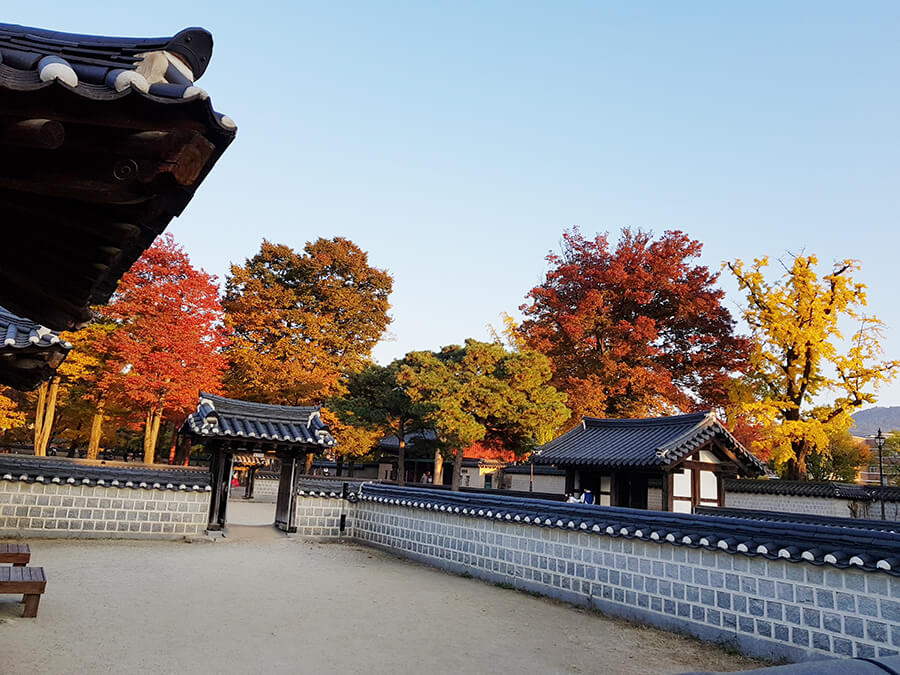
The Gyeonggijeon Palace takes up about 1/5 of the vast Jeonju Hanok Village. Gyeonggijeon is the shrine of Taejo, the founder of the Joseon Dynasty and currently designated as one of Korea’s Historic Monuments. Today, I will introduce the guided tour to this most important landmark of Jeonju to help you discover the hidden charms of the place.
*This post is based on the guided tour of the Gyeonggijeon Palace
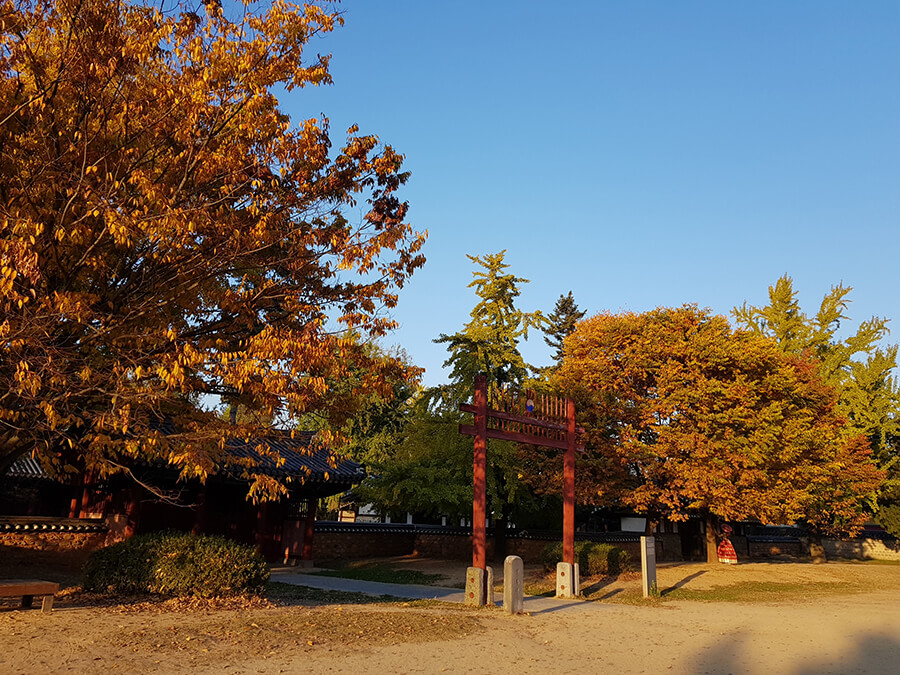
‘Uhyongjeon’ or ‘Gyeonggijeon’
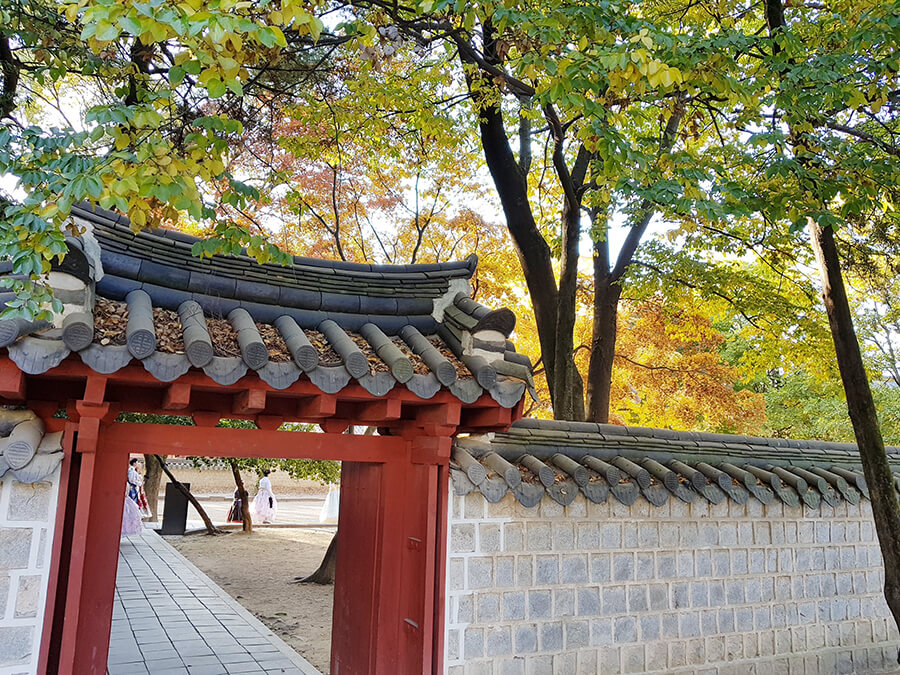
Built in the early Joseon Dynasty, the original name of Gyeonggijeon used to be ‘Uhyongjeon.’ The palace was burnt down during the Japanese Invasion of Korea in 1592, but was rebuilt again by King Gwanghae. The palace was renamed ‘Gyeonggijeon’ by King Sejong, the one who created ‘Hangul.’ The name literally means the ‘auspicious ground of harboring the spirit of Taejo.
‘Hamabi’ (a notice stone requiring riders to dismount)
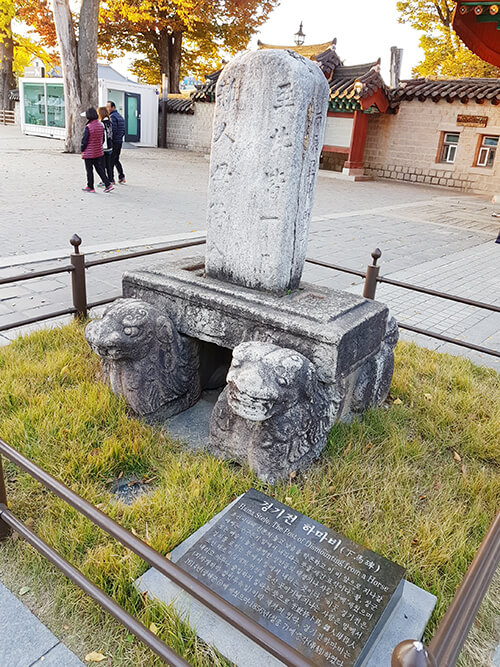
Have you seen the stone monument in front of Gyeonggijeon. It’s called ‘hamabi.’ It’s a notice stone requiring riders, no matter the social rank, to dismount. It was usually set up in front of a birthplace or shrine of a king, general, high official or respected scholar as a mean of paying homage. The ‘hamabi’ of the Gyeonggijeon Palace is the highest ranking hamabi. So it’s written on the monument that even the king should dismount.

‘Hongsalmun’ Gate that chases away bad spirits
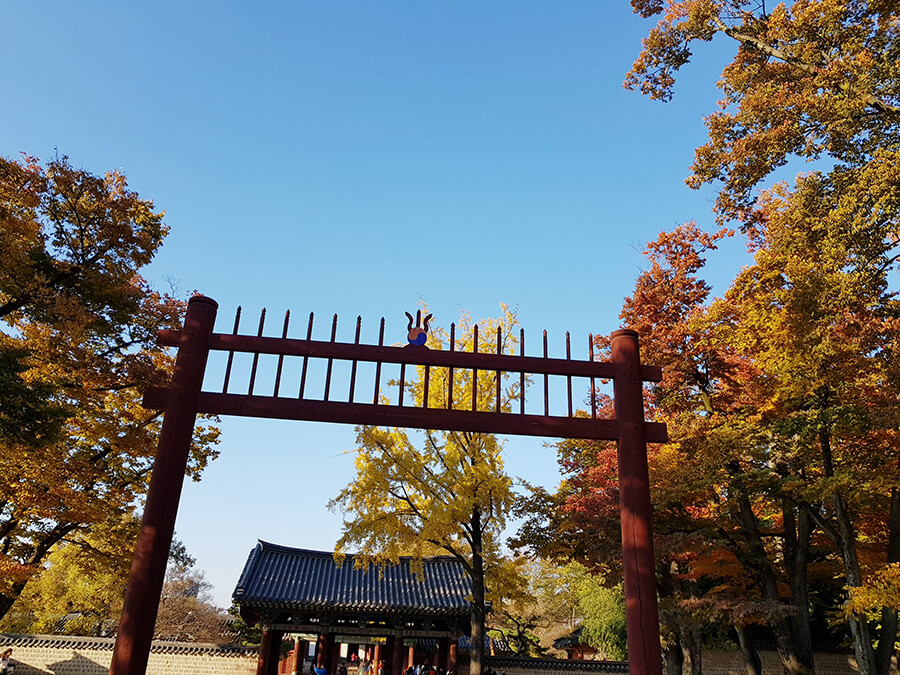
In the past, Koreans thought that ghosts or bad spirits are afraid of the color red. Therefore, Koreans eat red adzuki bean soup on the Winter Solstice. The entrance of Gyeonggijeon is the red colored ‘Hongsalmun’ Gate. It’s said that Korean ghosts tend to wear flapping or wavering clothes, but the spearing lattices of the gate will stop the ghosts from entering the sacred ground of Gyeonggijeon.
An elementary school inside Gyeonggijeon?
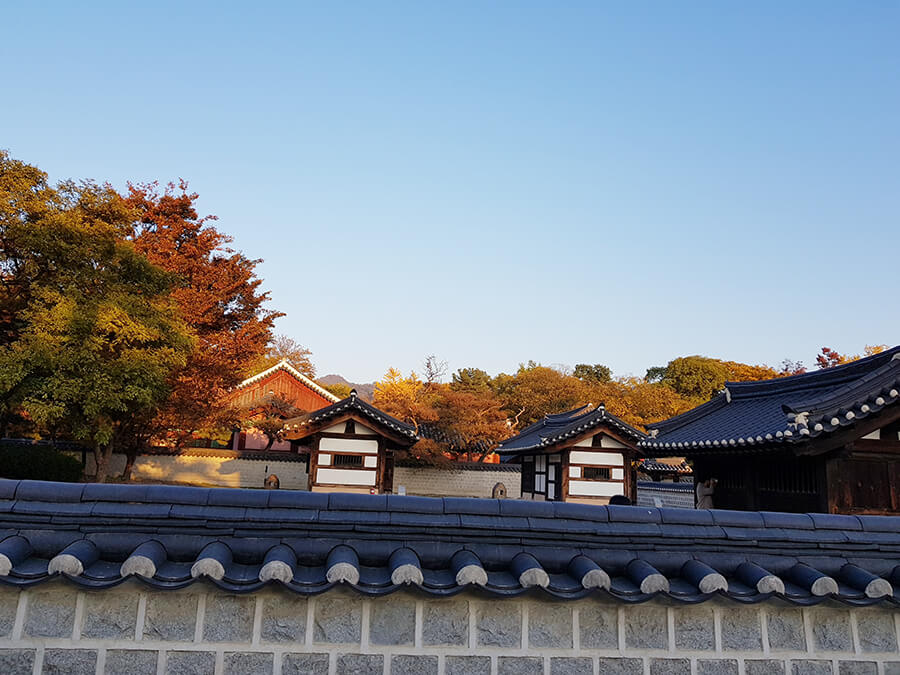
Gyeonggijeon used to harbor a variety of attached buildings. There still remain several hanok buildings in the palace. During the Japanese Colonization, an elementary school for Japanese children was built inside the palace. It’s strange that there used to be such school inside a palace commemorating a Korean king. After the independence, the elementary school was removed and now almost 90% of the palace’s original attached buildings have been restored.
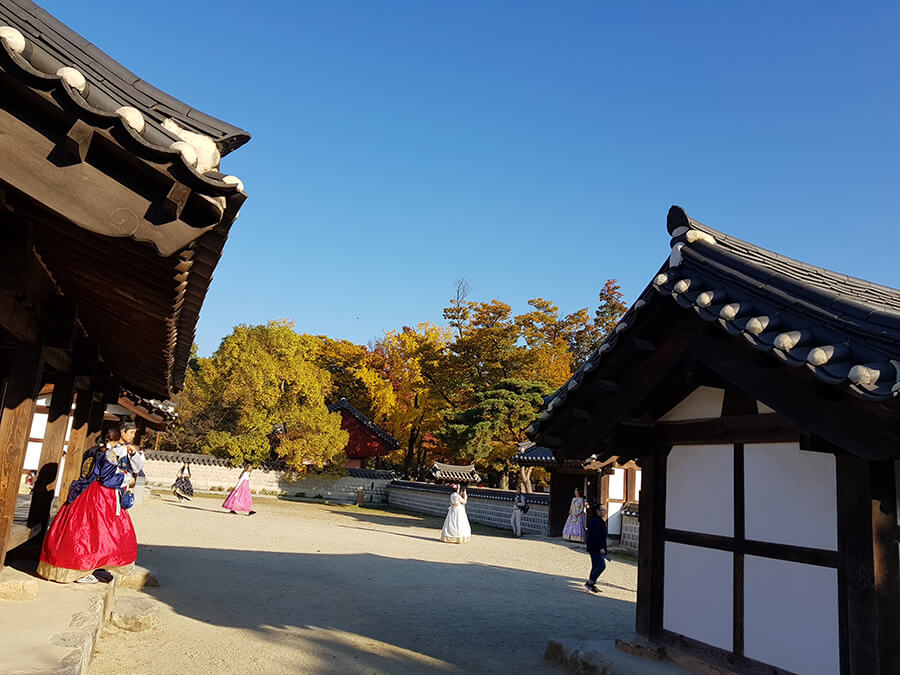
Use the gate on the right when passing the ‘Oesammun’ Gate
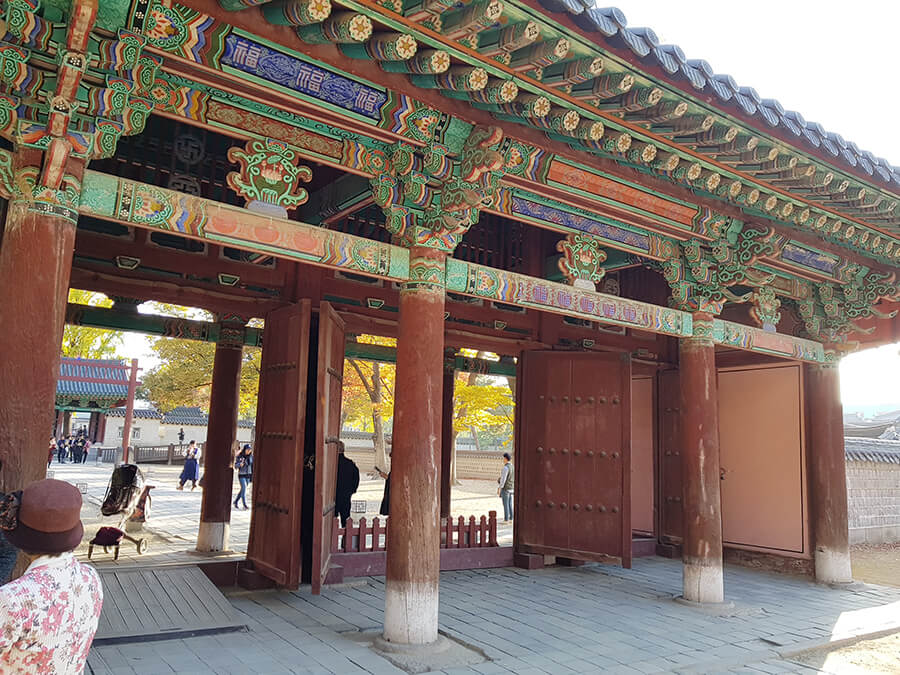
After the Hongsalmun Gate is the Oesammun Gate. ‘Oesammun’ means three gates on the outside. You can see the gate at the center is closed, because it’s preserved for the spirit of Taejo. Therefore, humans cannot pass through the center. The center is only opened during the ceremonies for Taejo. The visitors can only use the gates at the right and the left. However, in Korean philosophy, the right is the ‘better’ direction, so use the gate on the right!
‘Hwajaemak’ (fire shield) to protect the main building
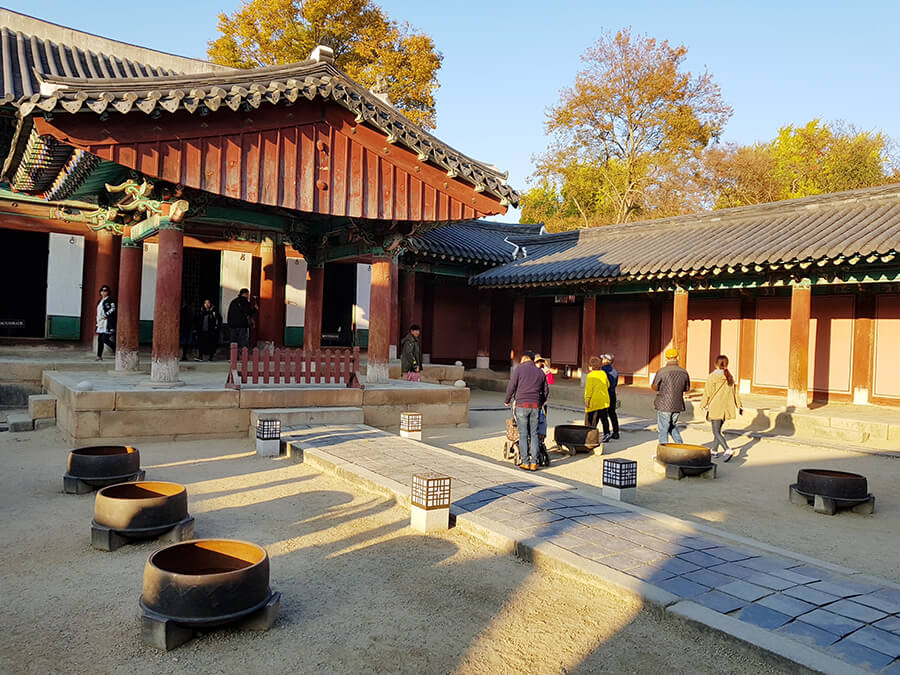
This is ‘Jungjeon,’ the main building harboring the mortuary tablet of King Taejo. This area also has special secrets. Hanok buildings, built with woods, are always at risk of fire. In Gyeonggijeon, there are two ‘hawjaemak’ or fire shields to prevent fire. One is the two turtles over the main building. The turtle symbolizes not only water but also longevity, wishing the dynasty to last for a long time. Another ‘hawjaemak’ is ‘dmu,’ which are six cauldrons situated on both sides of the walkway. The cauldrons used to carry water in case of fire. However, it was hoped that the fire ghost will run away after seeing the reflection of its face on the cauldrons’ water.
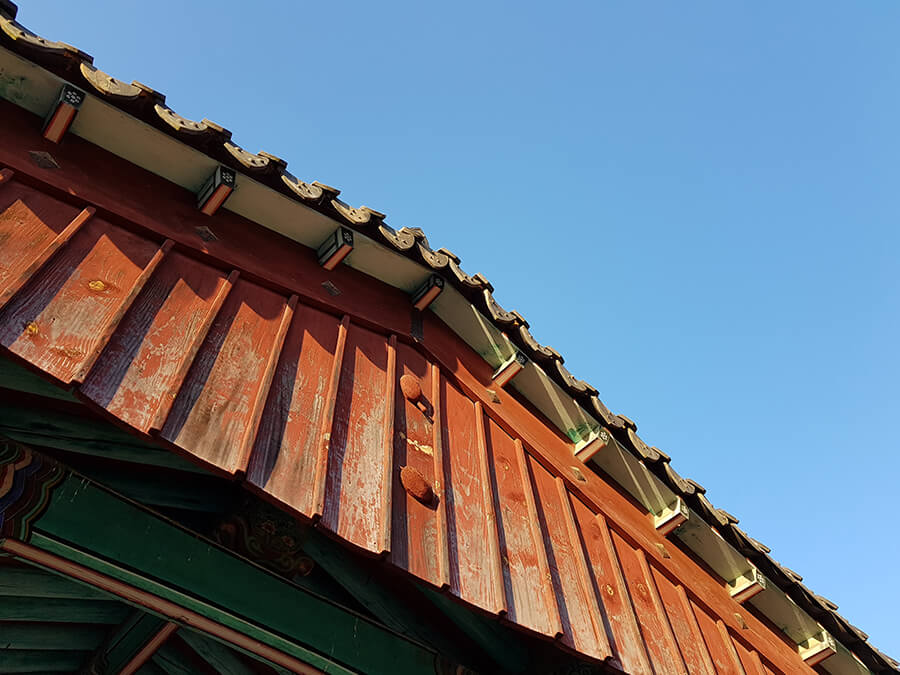

The sacrifice to protect Jeonju Sago (archive)

‘Jeonju Sago’ (archive) harbors important books such as the Annals of the Joseon Dynasty. The dynasty preserved the Annals in four locations throughout the country, including the ‘Jeonju Sago.’ However, during the Japanese Invasion of Korea in 1592, all the archives were lost except for the one in Jeonju. The locals strived very hard to protect the Annals. People like Son Hong-Rok and An Ui have evacuated the Annals to the nearby Naejangsan Mountain and sheltered them for seven years. Even An Ui, a Confucian scholar, have died from overwork while evacuating the sixty chests of the Annals from Naejangsan Mountain to Haeju (near Pyongyang) and Ganghwado Island (near Incheon). The sacrifice of scholars enabled the Annals to survive until today. Currently, the Annals is designated by the UNESCO as one of “Memory of the World.”
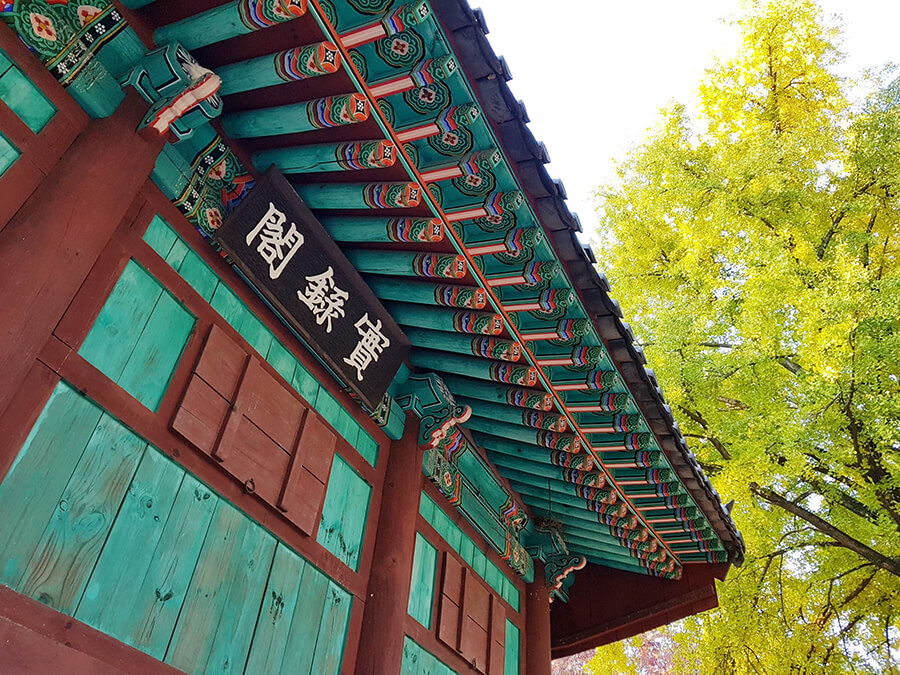
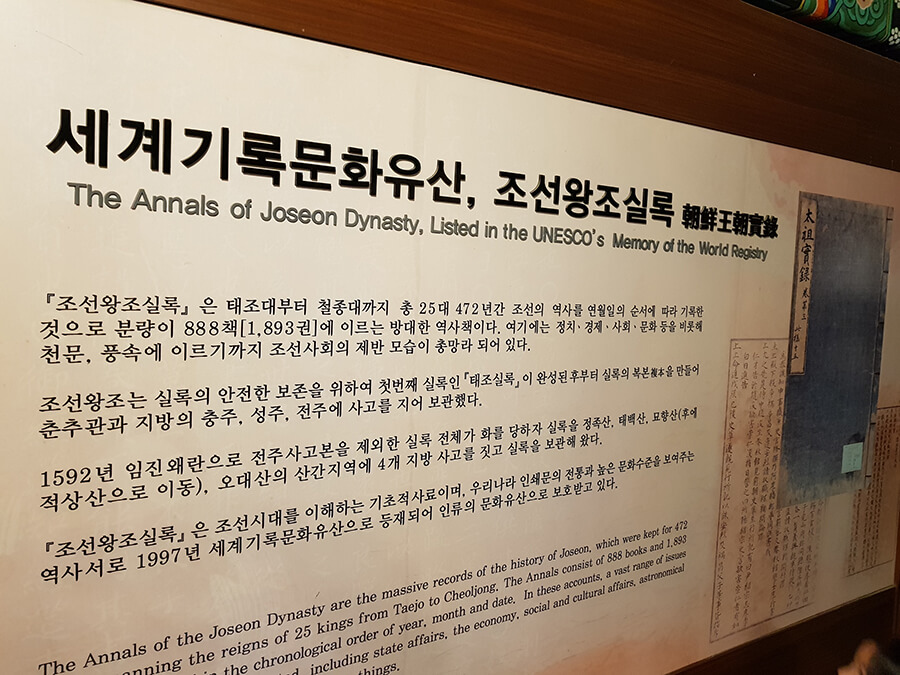
“Uhjin,” the true portrait of king
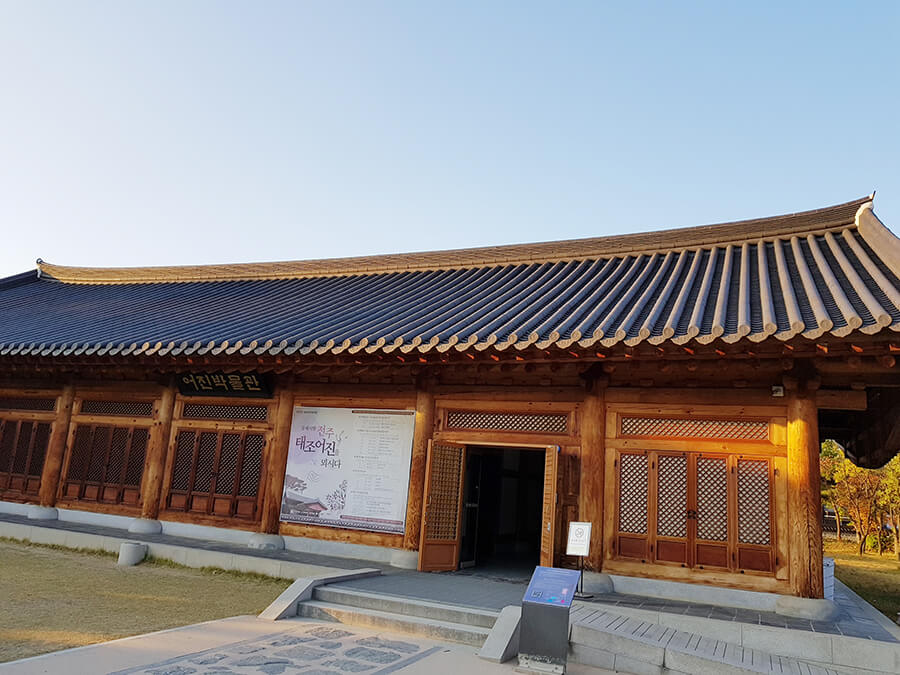

“Uhjin” means the portrait of king. The portrait of King Taejo at Gyeonggijeon is a copy made during the early 1900s. The portrait was copied on the hanji paper, a very durable Korean traditional paper that is said to last for a millennium. It is the only portrait of King Taejo that survives until today. What’s special about the Korean portraits is its realistic description. Physiognomically speaking, a spot or wart is thought to be inauspicious. Therefore, most traditional Chinese or Japanese portraits tend to omit them. However, traditional Korean portraits tend to draw everything. If you see Taejo’s portrait carefully, you’ll be able to find a wart over his right eyebrow.
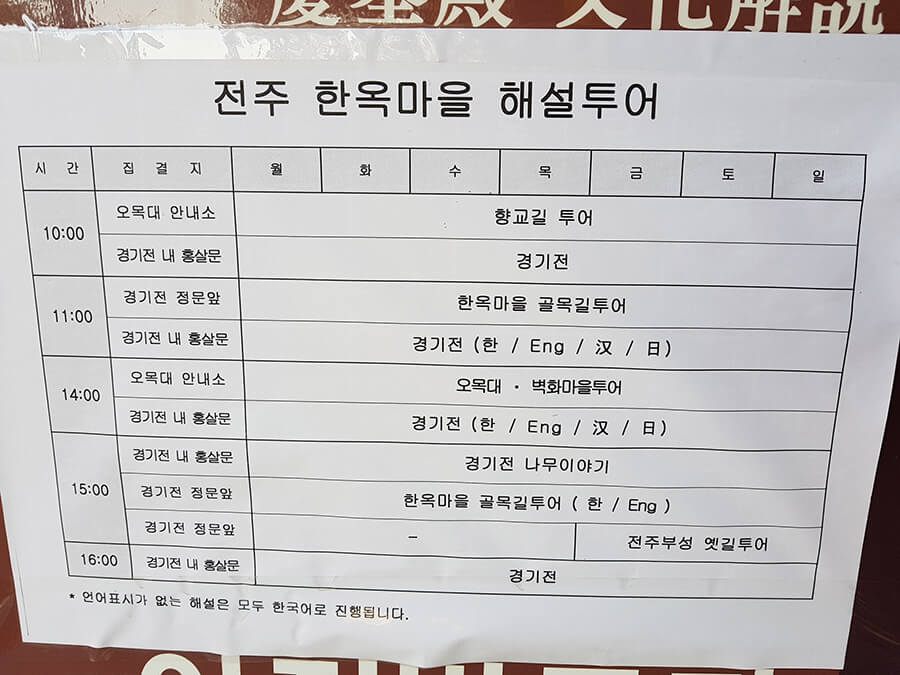
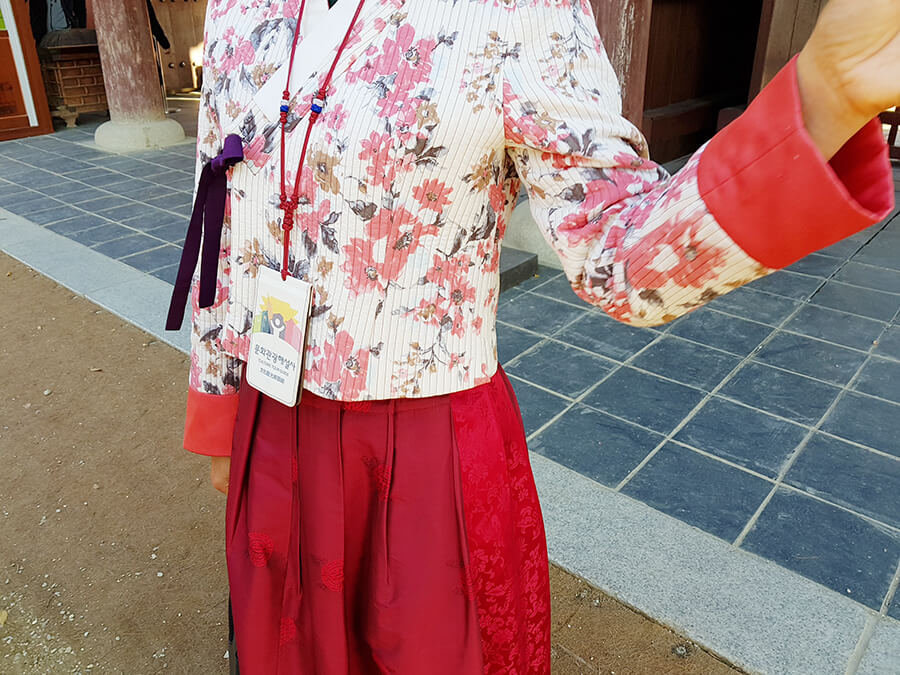

Apart from these, the Gyeonggijeon Palace has a variety of stories to tell. If you know more, you’ll get to see more of this fascinating cultural heritage. If you want to get to know this place more deeply, I recommend participating in the guided tour.



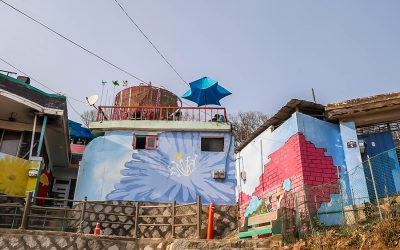
최신 댓글